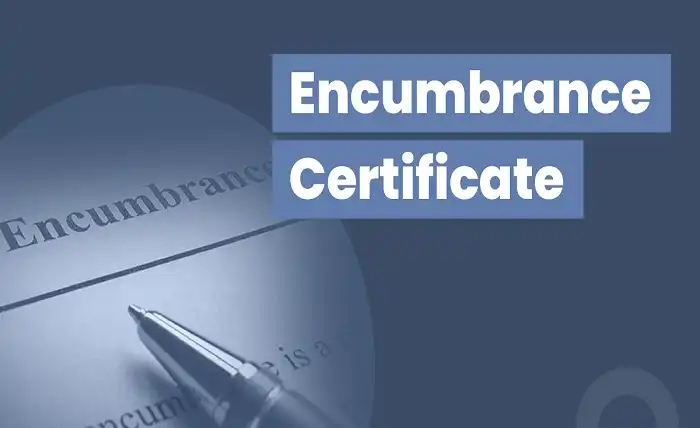Demystifying Encumbrance Certificates: A Comprehensive Guide

In the world of real estate and property transactions, understanding the concept of an encumbrance certificate is crucial. Whether you’re buying, selling, or simply curious about the history of a property, this document holds vital information. We will delve into what encumbrance certificates are, why they are essential, and how to obtain one. So, let’s start by defining the term itself.
What is an Encumbrance Certificate?
An encumbrance certificate is a legal document that provides a detailed record of all transactions related to a specific property. It serves as proof of free title or ownership/property rights and is essential in property transactions. Here are some key elements:
- Property History: Encumbrance certificates contain a chronological record of all transactions, including sale deeds, mortgages, leases, and any legal disputes related to the property.
- Property Ownership: They confirm the legal owner of the property and ensure there are no pending claims or encumbrances on it.
- Transaction Details: Encumbrance certificates list the names of the parties involved in property transactions, the sale amount, and the property’s location.
Importance of Encumbrance Certificates
Understanding the significance of encumbrance certificates is vital for anyone involved in real estate transactions. Here’s why they matter:
- Title Verification: When buying a property, the certificate helps verify the seller’s title and ownership rights, ensuring you are dealing with the rightful owner.
- Legal Clarity: It provides clarity on whether the property has any pending legal disputes, litigation, or unpaid dues. This is crucial to avoid future complications.
- Loan Processing: Financial institutions often require encumbrance certificates as part of the documentation when applying for home loans or mortgages.
- Resale Value: For property owners looking to sell their real estate, having a clean encumbrance certificate enhances the property’s resale value, as it demonstrates a clear title.
How to Obtain an Encumbrance Certificate
Obtaining an encumbrance certificate involves specific steps and procedures. While the process may vary slightly from one region to another, here’s a general outline:
Step 1: Identify the Relevant Office
Contact the local sub-registrar office or the concerned authority responsible for property registration and records. It’s important to determine which office holds the records for the specific property you’re interested in.
Step 2: Application Submission
Obtain the prescribed application form for an encumbrance certificate. Fill it out with accurate details, including the property’s information and the time frame for which you require the certificate.
Step 3: Payment of Fees
Pay the necessary fees as per the government regulations. The fee structure may differ based on the property’s location and the duration for which you need the certificate.
Step 4: Verification
The authorities will then conduct a thorough search of the property’s transaction history, ensuring that all the details are accurate and up-to-date.
Step 5: Issuance
Once the verification process is complete, the encumbrance certificate will be issued to you. It will typically include all the relevant property transactions up to the requested period.
Step 6: Collection
Collect the encumbrance certificate from the respective office. Ensure that all the details mentioned in the certificate are correct and match your requirements.
Read more about The Mysteries of E Pauti: A Comprehensive Guide
Uses of Encumbrance Certificates
Encumbrance certificates have a wide range of applications in various real estate and legal scenarios:
- Property Sale: Sellers use encumbrance certificates to prove their clear title to potential buyers, increasing the property’s marketability.
- Home Loans: Banks and financial institutions use these certificates to ascertain the property’s value and legitimacy before approving home loans.
- Legal Disputes: Lawyers and legal experts often refer to encumbrance certificates to resolve property-related disputes or cases.
- Inheritance and Succession: In cases of inheritance or succession, these certificates play a crucial role in determining the rightful heirs and their share of the property.
Common Misconceptions
Despite their importance, there are several misconceptions surrounding encumbrance certificates:
- They Guarantee Property Quality: While encumbrance certificates are essential, they do not guarantee the physical condition or quality of the property. You should still conduct a thorough physical inspection before buying.
- They Include Tax Information: Encumbrance certificates primarily focus on property transactions. Information regarding property taxes, utilities, or pending bills is not included.
- Instant Availability: Obtaining an encumbrance certificate may take time, as it involves a verification process. It’s essential to plan accordingly and not expect instant results.
Conclusion
In the world of real estate, where property transactions involve substantial investments, having access to accurate and up-to-date information is paramount. Encumbrance certificates provide the transparency needed to ensure the legality and ownership of a property. Whether you’re a buyer, seller, or simply a curious individual, understanding encumbrance certificates is vital in making informed decisions and avoiding legal complications. Remember that the process to obtain these certificates may vary by region, so it’s advisable to consult with local authorities or legal experts for the most precise guidance. By doing so, you can navigate the complex world of property transactions with confidence and clarity.




